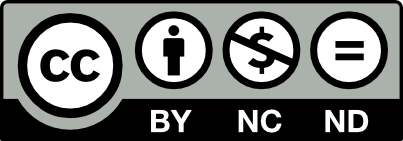Empreu aquest identificador per citar o enllaçar aquest ítem:
http://hdl.handle.net/10609/148482
| Títol: | First Step Piano |
| Autoria: | Ochando Sánchez, Rubén |
| Tutor: | Julià Lundgren, Daniel |
| Altres: | Casado-Martínez, Carlos |
| Resum: | Este proyecto está enfocado en aquellas personas que estén empezando a leer partituras y quieran iniciarse en un instrumento. Con esta premisa, por un lado, se pretende crear una interfaz gráfica que permita al usuario crear, guardar e importar partituras personalizadas que le ayuden a entender las figuras musicales y su relevancia con el instrumento elegido, y por otro lado, gracias a que esta interfaz estará conectada a un piano creado con Arduino, el usuario podrá reproducir las melodías creadas, practicarlas y además podrá reconocer las teclas del piano que debe pulsar gracias a una ayuda lumínica que encontrará asociada a cada tecla. Todas estas ayudas pretenden favorecer a que el estudiante consiga los resultados deseados sin importar sus limitaciones. De este modo, si el usuario tuviera limitaciones auditivas podría aprender a tocar sus melodías favoritas gracias a la reproducción lumínica de la canción, o si las partituras convencionales le resultaran demasiado complicadas, siempre podría personalizar las suyas propias y adaptar el aprendizaje a su ritmo y conocimientos. En conclusión, esta aplicación tiene el cometido de acompañar al alumno en su viaje de aprendizaje musical, donde, gracias a las distintas funcionalidades que contiene, podrá usar esta herramienta en la medida que le sea necesario para superar las dificultades que vaya encontrando en el camino. La música es parte del ser humano desde sus orígenes y forma parte de nuestro día a día, hagamos que todo el mundo pueda acceder a ella. This project is focused on those people who are starting to read musical scores and want to start on an instrument. With this premise, on the one hand, it is intended to create a graphical interface that allows the user to create, save and import personalized scores that help them to understand the musical figures and their relevance to the chosen instrument. On the other hand, this interface will be connected to a piano created with Arduino. The user will be able to play the created melodies, practice them, and will also be able to recognize the piano keys to press thanks to a light aid that will be associated with each key. All these aids are intended to help the student to achieve the desired results regardless of their limitations. In this way, if the user had hearing limitations, they could learn to play their favorite melodies thanks to the light reproduction of the song, or if conventional scores were too complicated, they could always personalize their own and adapt the learning to their rhythm and knowledge. In conclusion, this application has the task of accompanying the student on his musical learning journey, where, thanks to the different functionalities it contains, he will be able to use this tool as necessary to overcome the difficulties he encounters along the way. Music is part of the human being from its origins and is part of our day to day, let's make it accessible to everyone. |
| Paraules clau: | partituras Arduino procesamiento |
| Tipus de document: | info:eu-repo/semantics/bachelorThesis |
| Data de publicació: | 19-jun-2023 |
| Llicència de publicació: | http://creativecommons.org/licenses/by-nc-nd/3.0/es/  |
| Apareix a les col·leccions: | Treballs finals de carrera, treballs de recerca, etc. |
Arxius per aquest ítem:
| Arxiu | Descripció | Mida | Format | |
|---|---|---|---|---|
| ochandosrTFC0723.pdf | Memoria del TFG | 2,93 MB | Adobe PDF |  Veure/Obrir |
Comparteix:
 Google Scholar
Google Scholar
 Microsoft Academic
Microsoft Academic
Aquest ítem està subjecte a una llicència de Creative CommonsLlicència Creative Commons


